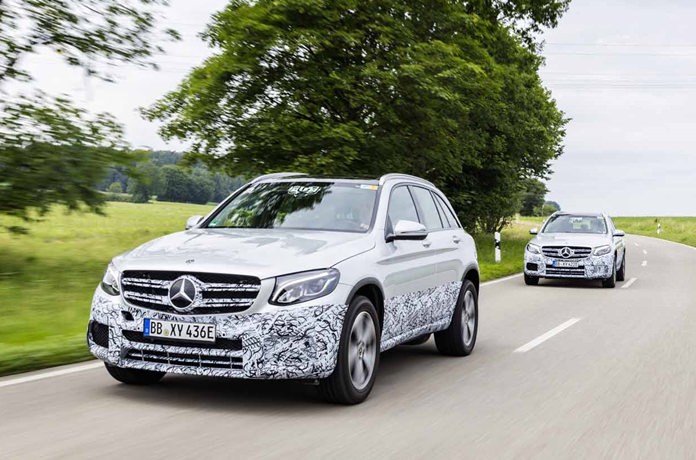
With diesel engines now the bête noir of the automotive world, manufacturers are looking everywhere for alternatives. So far it would seem that plug-ins are leading the replacement race, but there is more interest being shown in Fuel cells.
One reason for this is the fact that the electric cars take a long time in recharging, with 8-10 hours being representative. Recharging the hydrogen in fuel cells is only a matter of minutes in comparison. Range anxiety is currently not so much of a problem, now that fuel cells can go for some hundreds of kilometers.
Mercedes-Benz has confirmed plans for the reveal of its first series production plug-in fuel cell model, the GLC F-Cell, at last week’s Frankfurt motor show.
The new dual hydrogen and electric propelled model is planned to go on sale in selected markets in 2018 following an extensive development program that, Mercedes-Benz says, has seen the GLC F-Cell undergo the same testing procedure as other production models.
The zero-emission GLC F-Cell exchanges the standard GLC’s internal combustion engine for a fuel cell stack developed in a co-operation between Mercedes-Benz parent company Daimler and Ford in the Automotive Fuel Cell Cooperation (AFCC) joint venture based in Vancouver, Canada together with the electric motor set-up used for propulsion.
Electrical energy used to power the GLC F-Cell’s electric motors is generated on board within the fuel cell stack in a reaction between hydrogen and oxygen. The hydrogen is stored in two carbon-fiber encased tanks mounted within the GLC F-Cell’s floor.
Capable of holding up to 4 kg of hydrogen, the tanks are pressurized at 700-bar and are claimed to be able to be refilled within three minutes using the latest hydrogen refilling technology.
Details to the output of the fuel cell stack remain with M-B before the GLC F-Cell’s planned public debut, though Mercedes-Benz confirms it will be combined with a 9 kWh lithium ion battery to provide an overall range of up to 500 km, some 50 km of which is claimed to be achievable on the electricity from its battery alone. That should alleviate the ‘range anxiety’.
As with Mercedes-Benz’s existing petrol-electric hybrid models, the battery can be charged either via plug in means or on the run with electrical energy recuperated and stowed during braking and coasting.
Mercedes-Benz says it has been able to draw on over 18 million kilometers of testing of fuel cell vehicles in the development of the GLC F-Cell. The new model, which will be available to private customers on a standard sale basis rather than the private in-house fleet agreement like the earlier B-class F-Cell, is claimed to have undergone over 500 individual tests since 2015, including aerodynamic refinement and crash testing in the German car maker’s new wind tunnel and crash testing facility in Sindelfingen, Germany.
Data collected during its development program reveals the fleet of GLC F-Cell prototypes have used about 200 tonnes hydrogen and emitted some 1800 tonnes of water vapor.
However, the lack of refueling infrastructure remains a problem.




